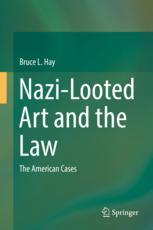

Most ebook files are in PDF format, so you can easily read them using various software such as Foxit Reader or directly on the Google Chrome browser.
Some ebook files are released by publishers in other formats such as .awz, .mobi, .epub, .fb2, etc. You may need to install specific software to read these formats on mobile/PC, such as Calibre.
Please read the tutorial at this link: https://ebookbell.com/faq
We offer FREE conversion to the popular formats you request; however, this may take some time. Therefore, right after payment, please email us, and we will try to provide the service as quickly as possible.
For some exceptional file formats or broken links (if any), please refrain from opening any disputes. Instead, email us first, and we will try to assist within a maximum of 6 hours.
EbookBell Team

5.0
28 reviewsThis book offers a clear, accessible account of the American litigation over the restitution of works of art taken from Jewish families during the Holocaust. For the past two decades, the courts of the United States have been an arena of conflict over this issue that has recently captured widespread public attention. In a series of cases, survivors and heirs have come forward to claim artworks in public and private collections around the world, asserting that they were seized by the Nazis or were sold under duress by owners desperate to escape occupied countries. Spanning two continents and three-quarters of a century, the cases confront the courts with complex problems of domestic and international law, clashes among the laws of different jurisdictions, factual uncertainties about the movements of art during and after the war, and the persistent question whether restitution claims have been extinguished by the passage of time.Through individual case studies, the book examines the legal questions these conflicts have raised and the answers the courts have given. From the internationally celebrated “Woman in Gold” lawsuit against Austria to lesser-known claims against Germany, Hungary, Spain, and museums and private collections in the United States, the book synthesizes the legal and evidentiary materials and judicial rulings in each case, creating a coherent narrative of proceedings that are often labyrinthine in complexity. Written by a leading authority on litigation and procedure, the book will be of interest to readers in various fields of the humanities and social sciences as well as law, and to anyone interested in the fate of artworks that have been called the “last prisoners” of the Second World War.